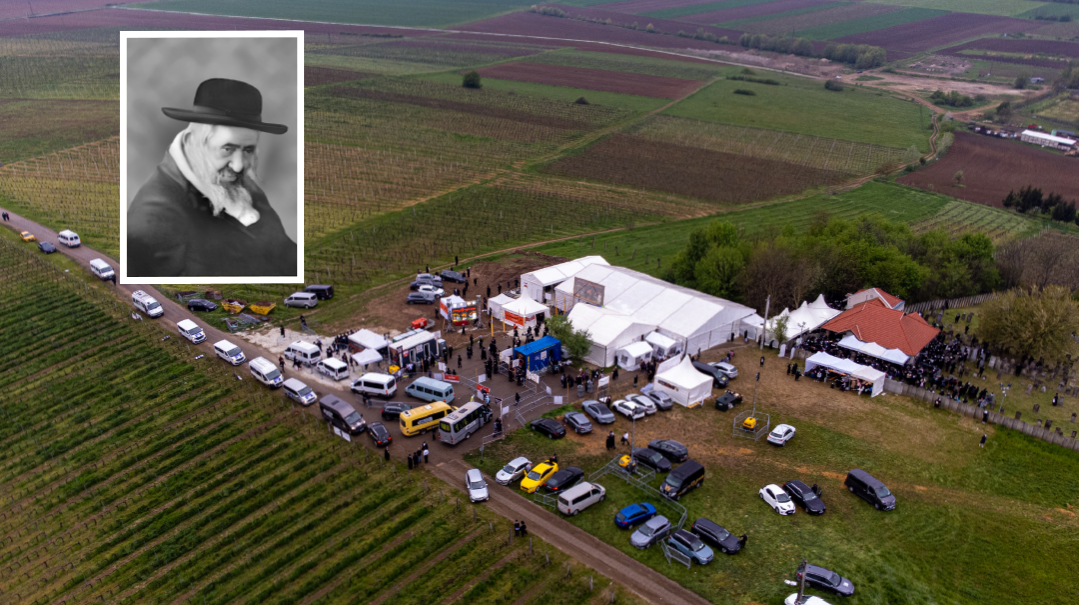Bread Upon the Waters
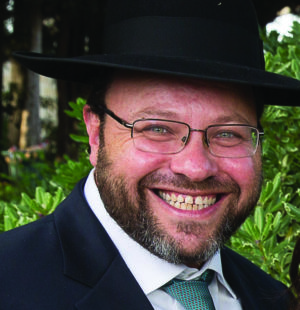
If two days of Purim isn’t enough for you to start loving Teveria, you’re in luck. There’s a third day, and for the really frum, even a fourth day of Purim here
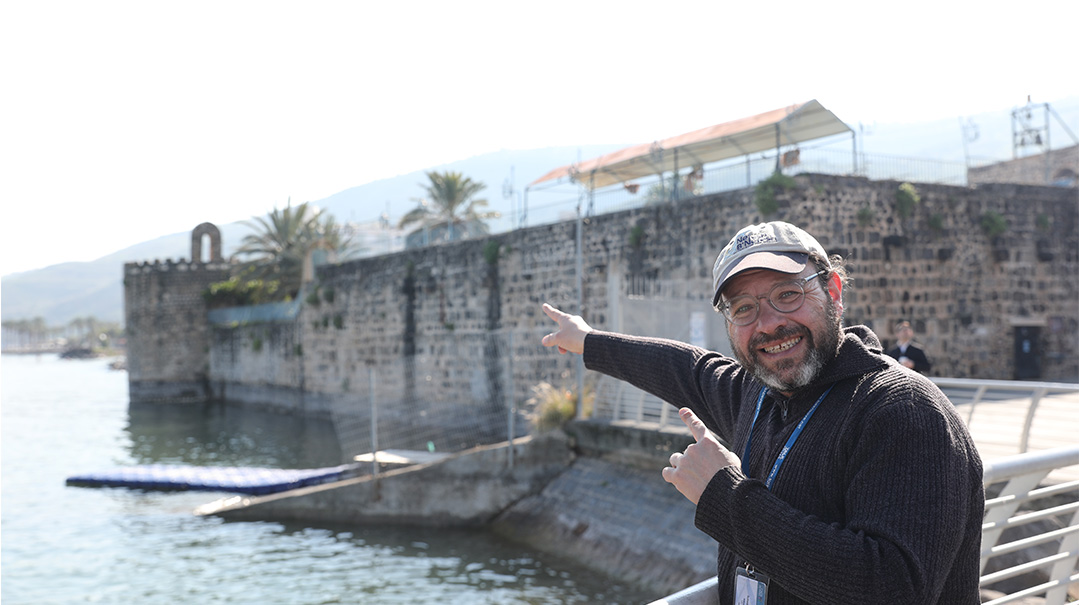
For most people, a trip to Teveria is either a visit to the holy tombs of the tzaddikim or a swim in the Kinneret. But the sages knew that this lowest and most humble of Jewish-populated cities is also the gateway to Redemption. For thousands of years, they were here, hoping to greet Mashiach. Perhaps we’ll be the ones to do it instead.
Chevron, Tzfas, Jerusalem, and Teveria, known as the “four holy cities,” have always evoked feelings of awe and longing. The mystics also understood that they corresponded to the four physical elements of the world: earth, wind, fire, and water respectively. But not only: they understood that each of these physical elements corresponds to a spiritual element that sustains the world. The city of Teveria, which we’ll be touring today, is one of the lowest cities on earth, and the spiritual energy of Torah that it corresponds to — water — flows to the lowest and most humble of places. It is the wellspring of Torah throughout the generations whose sweet taste, like the Kinneret that it sits upon, is an elixir of life for our nation.
For most people, a trip to Teveria is either a visit to the holy tombs of the tzaddikim who rest there, or water sports, or a swim in the Kinneret. Yet this great city, which served as the center of Torah for millenia, also has a legacy of incredible mesirus nefesh and ahavas ha’aretz. And as our rabbis taught, the fact that it’s the lowest Jewish-populated city on earth and the symbol of the lowliness of our exile means that it will arise first as well, heralding in the times of Mashiach and Geulah.
Walled In
We approach Teveria from right outside the walls and towers that stand as a relic to the old city that once was. But “old city” is really a relative term. These walls were only built in the mid-1700s by Dahr El Omar, the Druze governor of the region then under the Ottoman Empire. (In American history, 200 years ago may be considered a long time. But for our 4,000-year-old country, it’s just yesterday — a drop in the Kinneret.) Dahr’s walls were built over the remains of the walls built by Suleiman the First (who humbly called himself the Magnificent), which he built around the same time that he built the Old City walls of Yerushalayim in the 1500s. Suleiman’s walls, which were demolished in a series of earthquakes that had destroyed the city, were themselves built on remains of Crusader-era — and even Roman-era — walls from centuries before. What is certain about all these walls, though, is that none of them existed in the times of Yehoshua Bin Nun when Bnei Yisrael first entered the Land. Teveria didn’t even exist back then. It was built toward the end of the period of the Second Beis Hamikdash by Antipas, the son of Herod the Great, and named after the Roman emperor Tiberius.
Despite what seems to be a fairly accepted historical fact, the Gemara tells us that there was a question about which day of Purim the Megillah was read in Teveria. Is it considered a walled city from the time of Yehoshua Bin Nun, as is Jerusalem, which reads the Megillah on the 15th of Adar? Rebbi Yehudah Hanasi felt it should be read on the fifteenth, while others said it should be read on both days. But why? Seemingly, the city didn’t even exist until over a thousand years after Yehoshua.
The answer to this conundrum can be found in two ancient cities that do date back to the period of Yehoshua, and that are both mentioned as having walls. The first, which is located north of modern Teveria, is Tel Rekes, and the second, located south of Teveria near the hot springs, is the ancient city of Hammat. The “modern” city built by Antipas was built between those two, and thus falls under the category of being close enough and visible from the city itself to give it walled-city status. Do we view the Kinneret as being a virtual wall that joins the city together or not? That is the question.
If two days of Purim isn’t enough for you to start loving this city, you’re in luck. There’s a third day, and for the really frum, even a fourth day of Purim here as well, and it’s also connected to these walls. In the year 1742, the Pasha of Damascus decided to launch an attack on the cities of the Galil and against Dahr, who had rebuilt Teveria and reintroduced Jewish life to it. He laid siege for 83 days around the city, launching all types of artillery and cannons upon the hundreds of Jewish families that lived here, yet miraculously he was unable to breach the walls. He left on the fourth of Kislev, and the day was declared by Rav Chaim Abulafia, Teveria’s rav, to be a day of Purim. A few months later the Pasha returned once again to attempt a second attack on the city, but on the way, he became violently ill and died. That day was also made into a day of Purim.
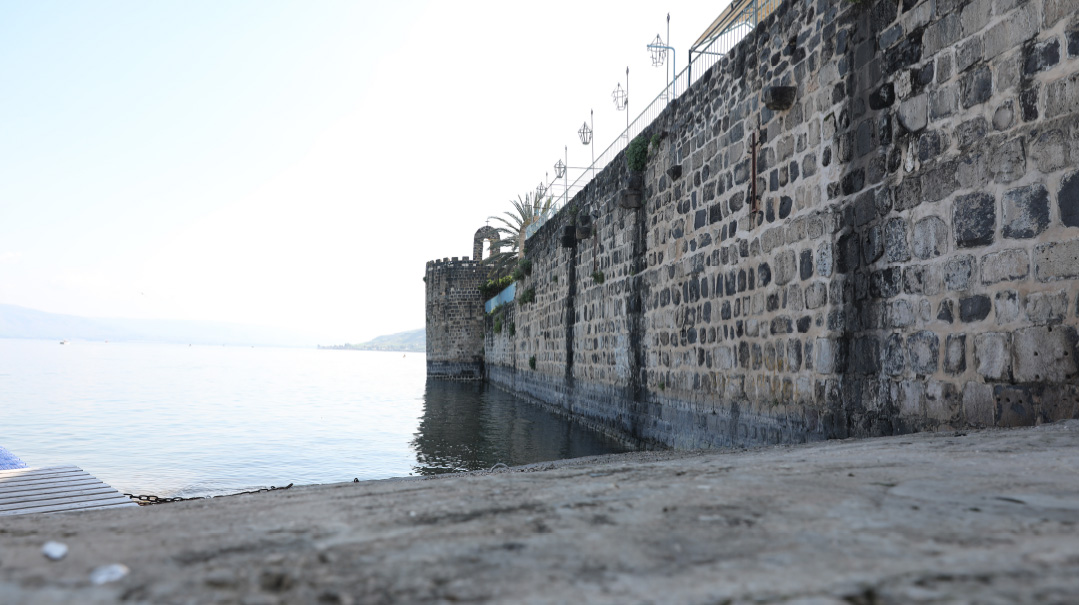
The standing old walls of Teveria were only built in the 1700s, and the entire city was only established during the Roman era. So why is the Megillah read two days here, if neither the city nor the walls even existed in time of Yehoshua?
Answer to Your Prayers
As we walk down from the walls of Teveria to the edge of the boardwalk, we can’t help but notice a large electronic Kinneret-shaped meter that tells us that the water levels this past winter have been blessed with the country’s incredible gishmei brachah. But it’s not just the water meter that shows how tefillos are answered here. Opposite us is a Greek Orthodox church with a large tower and foreboding walls that jut into the sea. It is at this spot where the Arizal would come down to Teveria to daven and sail out to the spot he located as Miriam’s Well, which Chazal tell us rolled into the Kinneret after Bnei Yisrael entered the Land. Half a century later, in 1622, the Shelah Hakadosh, at age 62, made the treacherous journey to Eretz Yisrael from Europe. He first settled in Jerusalem, but after being held for ransom there and being redeemed for an exorbitant amount of money despite his protests, he moved to Tzfas and ultimately to Teveria, where the remains of the shul he established still lie here under this church.
Rav Nosson of Breslov recorded a miracle that took place around these walls as well, to his rebbe, Rebbe Nachman. Rebbe Nachman arrived in Eretz Yisrael after Rosh Hashanah in 1798, on a journey to visit the tomb of his grandfather, Rebbe Nachman of Horodenka, who is buried here in the old cemetery. Rebbe Nachman remained in Teveria from after Succos until the month of Adar, when a pandemic hit the city and people were dying all over. Being that the Turks had locked the gates of the city to quarantine it, Rebbe Nachman climbed up these very walls to escape — and then he slipped.
“With his hands gripping above and the waters of the sea below him, he turned his eyes and heart to Heaven and miraculously he was saved,” Rav Nosson wrote.
This was probably the “narrowest bridge” he’d ever found himself on, but Rebbe Nachman knew never to fear or give up, even in dire straits.
(Rebbe Nachman wasn’t reciting Na Nach Nachma Nachman M’Uman — it would only be discovered 112 years after his death — yet that Breslover graffiti slogan is also sourced in Teveria, not far from here, when the mystical letter that contained that code reportedly fell from Heaven and was revealed to Rabbi Yisrael Odesser in his home near the tomb of Rabi Meir Baal Haneis.)
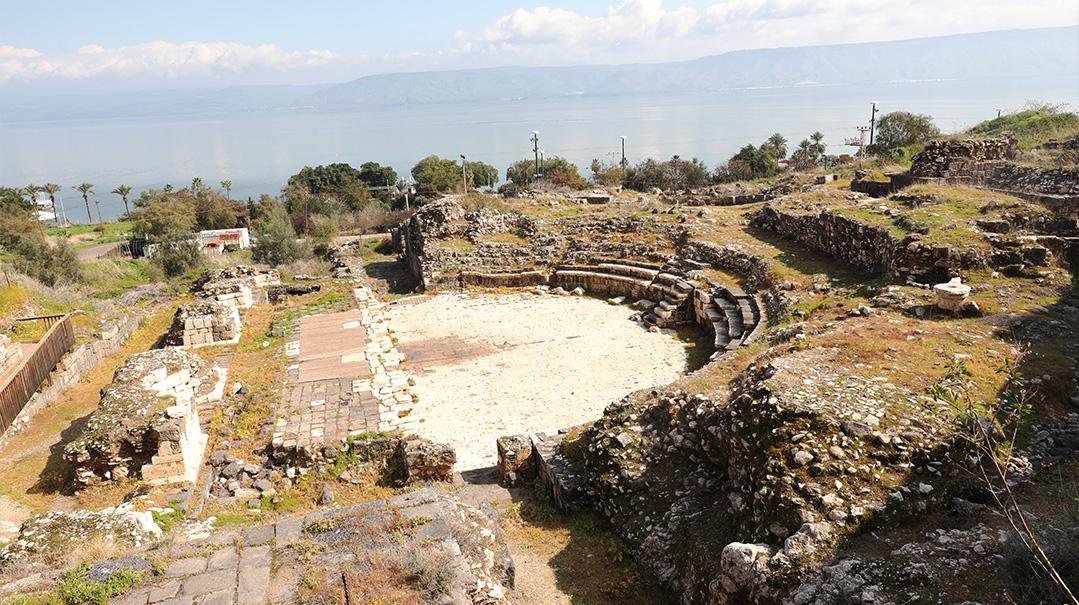
Climbing through the weeds, we arrive at the final stop of the Sanhedrin and the beis medrash of Rabi Yochanan and Reish Lakish
In Deep Water
As Teveria is the city of water, and water is a symbol of Torah, it’s perhaps no wonder that Teveria was the prime seat of Torah study after the Churban. The city was the final stop of the Sanhedrin, as it migrated from destroyed Jerusalem to Yavneh and then moved through the Galil — from Usha to Shefaram, Tzippori, Beit Shearim, and finally Teveria. The Sanhedrin remained there for several centuries until it was disbanded and declared illegal, under pain of execution, by the Roman emperor in 358 C.E. Realizing that their days were numbered, the Sanhedrin, together with the inspiration of Hillel the Second, met in secret in the surrounding caves and set the Hebrew calendar that we’re still using until today.
For some years, the great Rabi Meir was rav of the city; the two venerated brothers-in-law Rabi Yochanan and Reish Lakish had their beis medrash here, with their famed students Rav Ami and Rav Asi; and the city’s Torah proliferation was crowned with the compilation of the Talmud Yerushalmi. Jerusalem was in ruins when the Yerushalmi was compiled, but it was given the name to raise the banner of the city, at least in thought.
But it’s not just limud haTorah whose roots are in Teveria. Even our mesorah of Krias HaTorah and the punctuation and trop were established here, as the schools of Aharon ben Asher and ben Naftali hashed it out here in the tenth century. Until today, ben Asher is regarded as having produced the most accurate version of the Masoretic text, including vowels and cantillation. The famed Aleppo Codex, written in Teveria according to ben Asher’s rules, kept in the Central Synagogue of Aleppo, and then smuggled into Eretz Yisrael in the 1950s, has been considered the authoritative document of Tanach since the time of the Rambam.
Yet to find where most of this Torah took place is no easy task today. Most of the sites are not easily accessible or preserved; yet with a bit of research and after climbing through high weeds and overrun dirt roads, our photographer and I managed to come to a clearing where we were taken aback by the remains of a well-kept glorious Roman theater under the hills of Mount Berniki (Berenice) and not far from the grave of Rachel, the wife of Rabi Akiva. A bit further down the hill we discovered an ancient bathhouse, the remains of the beis medrash of Rabi Yochanan and Reish Lakish, and the place where the Sanhedrin sat. The broken marble floors and benches lay in ruins near the remains of the former shuk and Roman Cardo. The fallen pillars still line the side of the road. With a little imagination, you can picture the earthquake that devastated the city in that period.
The Talmud Yerushalmi is replete with stories that happened right here, such as the story of Rabi Eliezer, Rabi Akiva, and Rabi Yehoshua bumping into a heretic magician in the Teveria bathhouse, who invoked an incantation that mystically froze Rabi Akiva and Rabi Eliezer to the arched ceiling where idolatrous statues were placed. Rabi Yehoshua countered with his own spell that locked the magician to the gates, and everyone who would come in or out would smack the door on him. After he begged for mercy and released the holy men, Rabi Yehoshua set him free. Yet his insolence wasn’t cured. Later, as the heretic was walking to the Kinneret, he again uttered a spell and the water split. He mocked the rabbanim, saying that he was just like Moshe Rabbeinu and sea-splitting was really no big kuntz. Rabi Yehoshua responded by telling him that if he was truly like Moshe, he should walk between the waters on dry land just as the Jews did. When the heretic did so, Rabi Yehoshua uttered another tefillah and the waters collapsed and drowned him.

Standing Room Only
At the southern tip of the modern city of Teveria lies one of the most visited places of pilgrimage in Israel’s north: the tomb of Rabi Meir Baal Haneis. With the music and the many vendors selling seforim, pictures of tzaddikim, Judaica items and trinkets, visitors might think they’ve hit Meron. The Yerushalmi tells us that Rabi Meir, who was the son-in-law of Rabi Chananya ben Tradyon of the Asarah Harugei Malchus, was forced to flee toward the end of his life from the Romans to Asya. The Talmud tells us that Erev Purim, no copy of Megillas Esther could be found there, so he wrote out the entire Megillah from memory, without a single mistake. There he died, yet his last request was to be buried in Eretz Yisrael near the Kinneret, in an upright standing position so that when Mashiach comes, he’ll just walk out to greet him. He asked to be buried by the seashore so that the water that laps up on the shore would also lap his grave. Entering the tomb, you’ll see two vertical pillars directly above his grave, commemorating his last will — and the promise attributed to him that he won’t sit until Mashiach comes.
Although the original structure that marked Rabi Meir’s grave was destroyed by an earthquake and the exact location of the grave was lost, two stone pillars remained. In 1867, when the Sephardic kehillah rebuilt the complex on his tomb, there was a letter signed by the five rabbanim of Teveria who testified to a great miracle that took place: When they tried to put the two large pillars back on the actual spot of the grave, it took 50 men to move the first one, and the second wouldn’t budge. Suddenly, the second pillar lifted itself up and came to rest on top of the first one.
The Ashkenazi kehillah at that time did not have money to chip in for the reconstruction of the tomb, so the Solomonic deal they made was that the tomb would be divided in half, and when they would come up with money the Ashkenazim would build their own tomb on their portion. It took another 50 years, but in 1920 the Ashkenazi tomb construction was completed. Today Rabi Meir lies — or more accurately, stands — between both buildings, where thousands flock every year to daven for yeshuos.
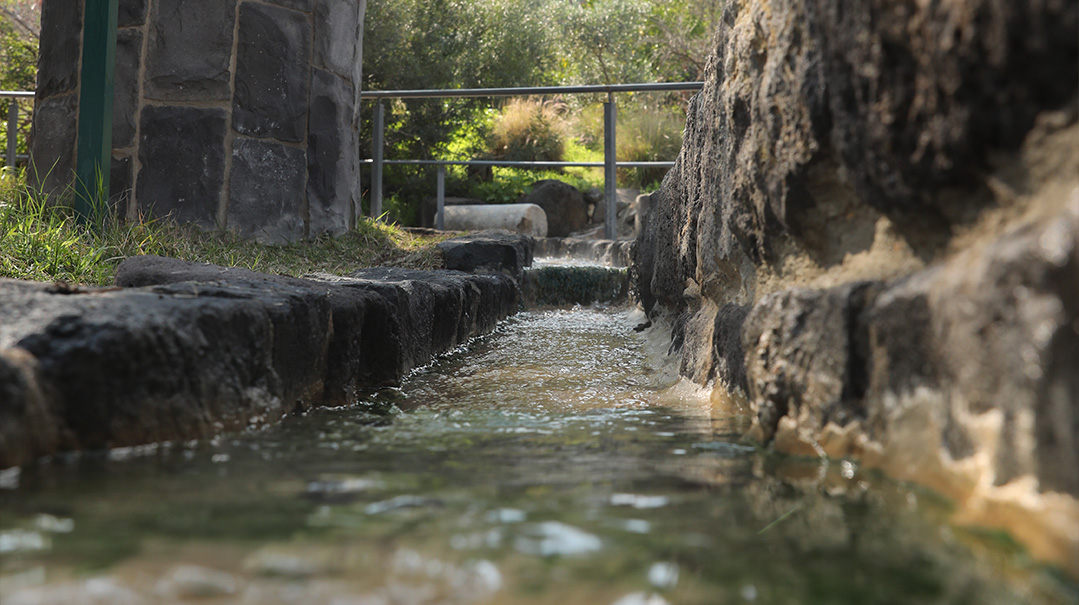
The healing waters of Teveria’s hot springs were never taken for granted – even by Rashbi
In the Hot Spot
Right below Rabi Meir’s tomb are the centuries-old hot springs, located in the Hammat Teveria historic park. The park has recently been redone, and visitors can bathe in newly constructed pools that have the same ancient medicinal hot springs that people from the Mishnaic period and onward would come to be healed in. Perhaps the most famous of them was none other than Rabi Shimon Bar Yochai who, after hiding from the Romans for 13 years in a cave in Peki’in buried up to his neck in sand — which doesn’t do wonders for your skin — was brought here to be healed in these waters. As hakaras hatov to the city, he mystically was able to identify where all of the dead bodies that had been buried under the rubble of the various earthquakes that had devastated the city were lying. They were then exhumed and buried properly outside of the city, enabling the now-purified city to become habitable for Kohanim.
Near these pools, there’s an ancient shul from the period of the Tanaaim and Amoraim with an incredible mosaic fully intact and preserved. It contains the names of the donors to the synagogue (they did it back then too), as well as fascinating images of the various astrological signs and the four seasons. It’s a bit jarring to see a shul floor with pictures of what to us do not seem like “traditional” Jewish images, but in fact this was a common motif in almost all shuls during these eras.
The Talmud tells us about the rebbi of Rabi Meir, the Tanna Elisha Ben Avuya, who eventually lost his faith and became a heretic. Excommunicated by the Sages, he became known as Acher. Rabi Meir, though, never abandoned his rebbi, and the Talmud records a story that could have taken place right outside this shul on Shabbos, when Rabi Meir was interrupted in his sermon and told that Acher was riding his horse back and forth. Rabi Meir went out to speak with his rebbi, and the conversation concluded when they reached the limits beyond which one may not walk on Shabbos. When Acher told Rabi Meir to turn back, that they’d reached the techum, Rabi Meir begged him to come back as well. But Acher told him that he had heard a bas kol that all the children of Hashem could do teshuvah except for him. (There’s a question as to whether Acher interpreted the bas kol correctly.)
After Acher’s death, Rabi Meir prayed over the smoke rising from his grave until in Shamayim, Acher was forgiven. Yet because of his relationship with Acher, and even though Rabi Meir was unique in that he could, in the words of the Talmud, “take out the fruit and discard the rind,” the Sages removed his name from many Mishnayos, giving us the rule that we have today that an anonymous (stam) mishnah is generally Rabi Meir, making him the most unquoted Tanna in Shas. Yet here we have another Torah from Teveria — the Torah of teshuvah.
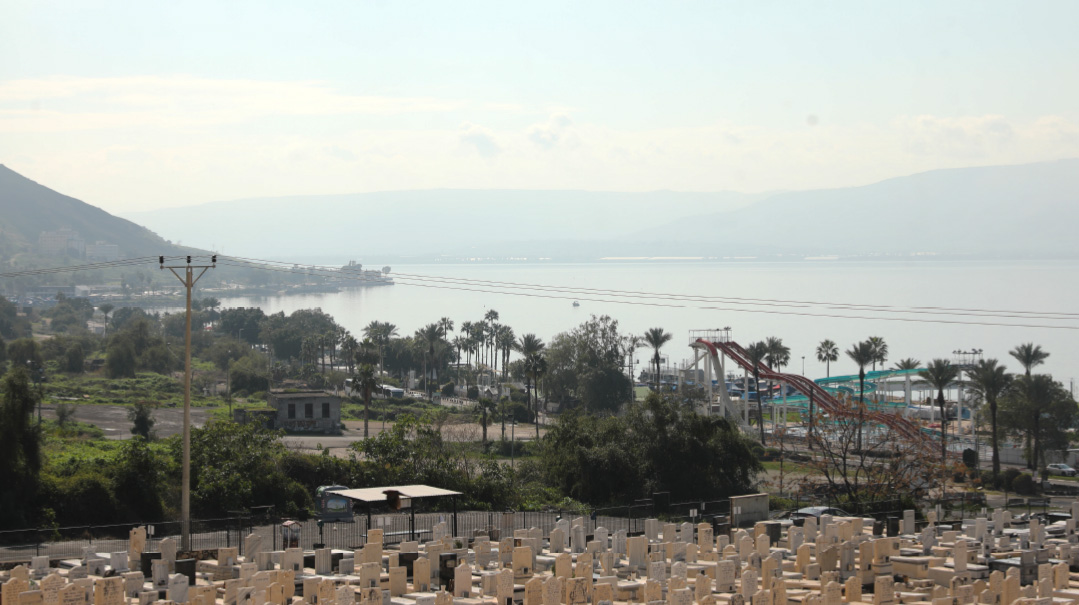
Location, Location
People who come to Teveria to daven will visit, in addition to Rabi Meir Baal Haneis, the tombs of Rabi Akiva, the Ramchal (Rav Moshe Chaim Luzzato) alongside him, and the Rambam and the Tannaim and Amoraim buried next to him in the center of town. All these tombs contain mysteries, but what’s especially interesting is that none of these great men — Rabi Meir, Rabi Akiva, the Ramchal, or the Rambam — actually died in Teveria. Rabi Akiva was killed by the Romans in the city of Caesarea, the Ramchal died in a plague with his wife and four children in the 1700s in Akko, and the Rambam died in Egypt. Legend has it that before the Rambam’s death, he begged to be buried in Eretz Yisrael, and the camel that brought his aron stopped at this very spot.
According to some traditions, the tomb of the Ramchal was relocated here from Kfar Yasif outside of Akko, where he was initially buried (and where there is in fact still a grave stone with his name on it). Why was he buried alongside Rabi Akiva? One tradition is that the Ramchal, who was niftar at age 40, was the tikkun of the neshamah of Rabi Akiva, who for the first 40 years of his life did not learn any Torah. Rabi Akiva was killed at age 120 and was brought here because of the mesorah that the Sanhedrin will ultimately be reestablished here when Mashiach comes. It’s why so many of the great scholars were drawn to the city and wished to be buried here.
While the community for the last few centuries was largely Sephardi, it was also the heart of the chassidic return to Eretz Yisrael, with many of the students of the Baal Shem Tov making their home here. In the year 1777, 300 students of the Maggid of Mezritch, led by Rebbe Menachem Mendel of Vitebsk and Reb Avraham Kalisk, came to Eretz Yisrael and settled in Teveria. The Jewish population of Eretz Yisrael at the time was about 6,000, and their arrival — which was a five percent increase —was seen to be a sign heralding in the Geulah. Many chassidim followed after that, including Rebbe Aharon of Karlin, who sent his son to open a settlement and shul here.
It’s noteworthy that while in Europe a war raged between the chassidim and misnagdim, when the students of the Vilna Gaon arrived in Eretz Yisrael under the leadership of Rav Yisrael M’Sklov (author of Pe’as Hashulchan), the two groups joined and shared support from the Diaspora while uniting their efforts in building up their kehillos. In fact, Rav Yisrael planted the first esrog orchards on the outskirts of Teveria, and over 200 years later those trees are still providing esrogim to thousands of chassidim and Litvaks all over Eretz Yisrael.
Although these religious pioneers were pivotal in building the city, somehow the old cemetery where the great students of the Gaon and the Baal Shem Tov are buried doesn’t get as much traffic. It’s a bit ironic that people will travel all over Eastern Europe for hours over harsh terrain with some Polish, Ukrainian, or Hungarian taxi drivers to daven at that one grave of the gadol or rebbe buried there, while here in Teveria, there are tens of the greatest students of the Maggid and the Baal Shem Tov, yet very rarely will you see people coming to daven here.
One of the most tragic graves in the old cemetery is the joint tomb of the 19 people massacred the night after Rosh Hashanah in 1938, during the Great Arab Revolt under the British Mandate. The city, with about 2,000 Jews, had very minimal protection from the British, and the 15 Haganah guards on duty were not nearly enough to patrol the entire city. The Arabs began their rampage at the Ohel Nachum Shul, which they set on fire, burning the sifrei Torah and killing the shamash while he tried to protect the holy scrolls. From there the mob went from house to house: in one house a mother with her five children were killed, in another, a family of four. We visited the shul where this attack took place and searched to find the plaque that was erected to memorialize the tragedy. We found it half-covered behind a bookshelf of seforim.
As we walk from the cemetery and leave this holy city, the words of Chazal — that Teveria is the city from where the Geulah will come forth — rings in my ears. I think of the tefillos that had been offered here, the Torah that was transmitted and all of those who kept returning to this city in order to be part of that final Redemption. The holiday of Purim, when Klal Yisrael accepted the Torah again b’simchah, led to our first return to Eretz Yisrael from galus. May our levels of appreciation and passion for Torah continue to increase, so that we’ll merit the final Geulah speedily. We’re here in Teveria, waiting for it to happen.
(Originally featured in Mishpacha, Issue 903)
Oops! We could not locate your form.


